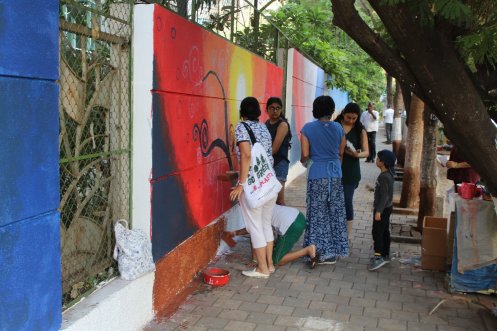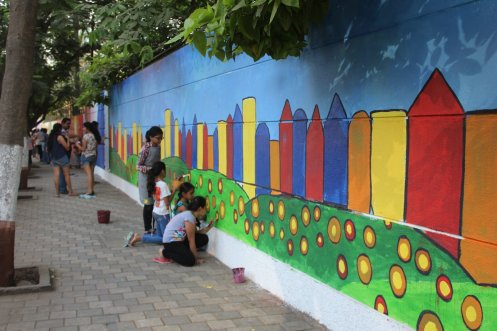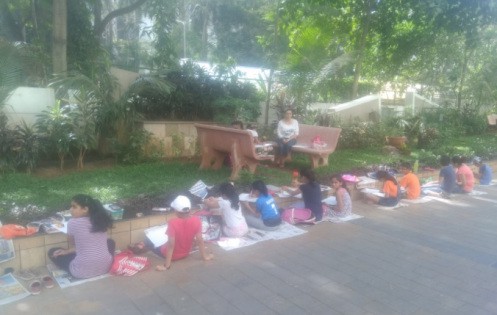This Earth Day, on April 22 2018 (and the previous day), residents from the Lokhandwala Township of the western suburb of Mumbai, Kandivali East, got together to participate in the “Colour My Township” initiative, organised by We All Connect (wAc) with the support of Kansai Nerolac Paints Limited.
wAc is a community group that was formed to promote bonding and oneness among residents of the township. A few months ago, the group painted a small wall together and members found that painting compound walls together with neighbours was a good way to get to know them.
According to Mr Santosh Shetty, founder of wAc, planning for this Colour My Township event started two months ago. The walls of Whispering Palms Xclusives CHS were chosen as the “canvases,” as they had frontage on the main Akurli Road that provided a reasonably large surface area for painting murals; the society management extended full support to wAc.
About twenty artists (mostly from the Kandivali area, but also included some from more distant parts of Mumbai like Powai) were identified to be mentors to guide the participants. The designs chosen to be painted were aimed at beautification of the area and creativity, with conscious avoidance of text and preachy messages. Kansai Nerolac Paints provided the external paints.
Painting of the base coat started on the morning of 21st April and as the day progressed, layers were added. Work continued on Earth Day with detailing and finishing touches by the more experienced artists. While the adults worked on the walls, the children participated in an on-the-spot drawing-cum-painting competition. Around lunch time all was done. Overall, almost 300 people, from age 3 upwards, lent their strokes to 3500 sq ft of wall area, taking about 12 hours to complete the job. And the results are here for you to see:
[This post has been republished from the author’s blog here. All photos are provided by the author/wAc.]





